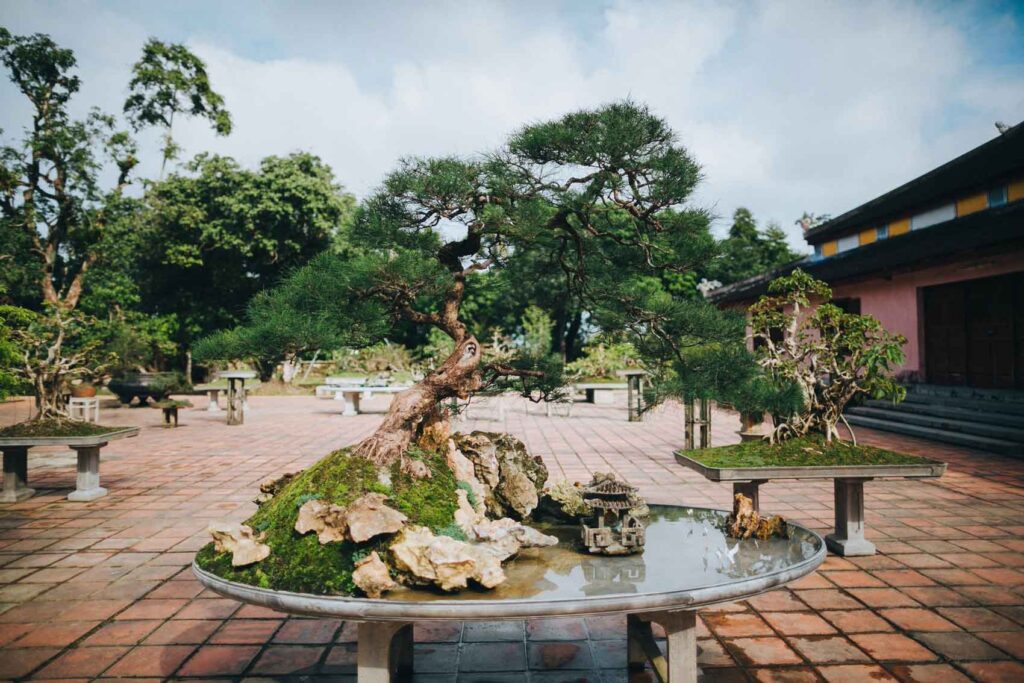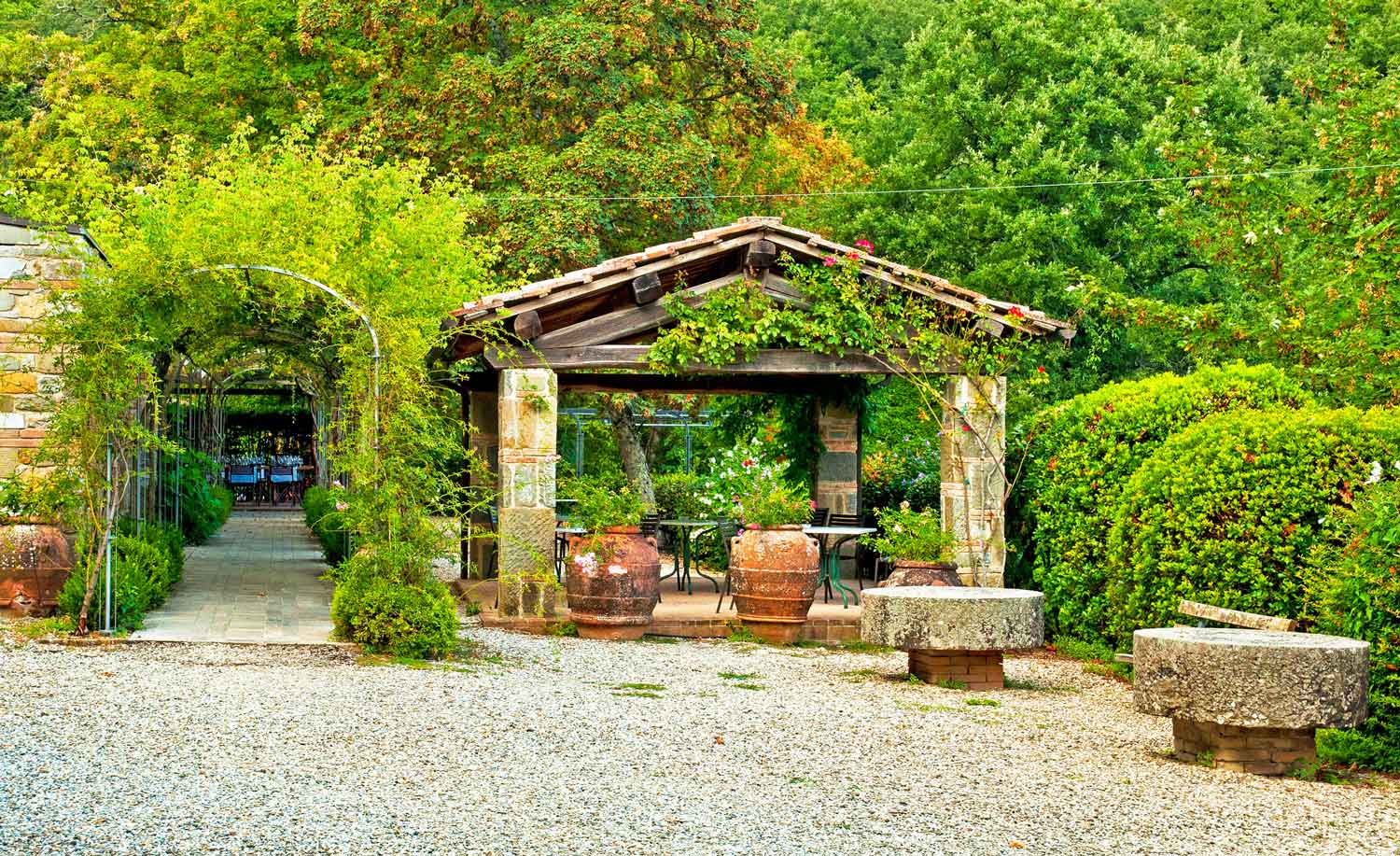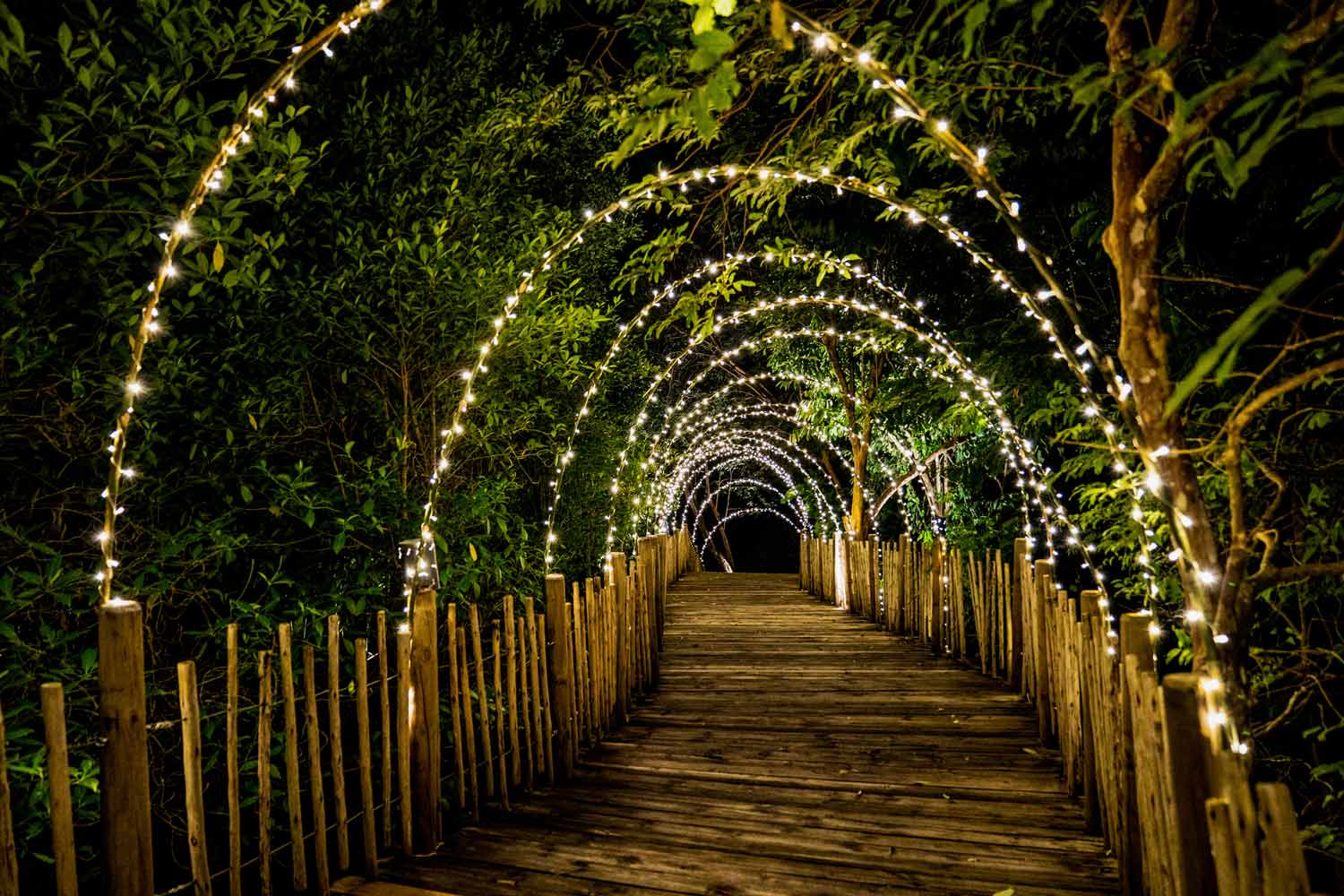Meditation gardens offer a serene and peaceful escape from the stresses of daily life. By incorporating elements from landscapes such as Japanese gardens, you can create a tranquil environment that promotes mindfulness and relaxation.
In this article, we’ll explore 15 different meditation garden ideas, helping you create the perfect personal sanctuary to help melt away the stresses of the 9-5!
What Is A Meditation Garden?
A meditation garden aims to create a tranquil environment that fosters relaxation, mindfulness, and self-reflection. By thoughtfully designing a space incorporating natural elements, delicate plants, and calming features, your meditation garden becomes a personal sanctuary, offering respite from daily stressors. These gardens encourage a deeper connection with nature and oneself, providing an ideal setting for mental and emotional healing. A meditation garden is a haven for contemplation, inner peace, and personal growth, promoting overall well-being and a balanced state of mind.
Choose the Perfect Location
Before you begin designing your meditation garden, choosing the right location is essential. Look for a quiet, secluded spot shielded from noise, traffic, and prying eyes. The ideal space should be easily accessible yet feel like a private oasis.
Embrace Simplicity
When designing a meditation garden, simplicity is vital. Avoid overcrowding your space with too many elements or decorations. Instead, create a serene, uncluttered environment that fosters mindfulness and introspection.
Incorporating Natural Elements
Nature plays a significant role in meditation gardens. Incorporate natural elements such as water, rocks, and plants to create a harmonious and balanced environment. These elements can also serve as focal points for meditation and reflection.
Incorporate Japanese Garden Elements
Japanese gardens are known for peaceful garden ideas, including harmony and balance. To create a sense of tranquility, incorporate traditional elements such as stone lanterns, water basins, and stepping stones.
Japanese gardens are known for their harmony and balance. They are an excellent way to create a serene and harmonious outdoor space. Start by choosing a suitable location that’s quiet and peaceful. Then, embrace the beauty of nature by incorporating elements like water features, carefully pruned trees, and stone lanterns.
Remember, balance is key in Japanese gardens, so thoughtfully arrange your plants and ornaments. Add a meandering stone pathway to guide your journey through the garden, and don’t forget to include a cozy spot for relaxation and meditation.
These features can help establish a serene atmosphere that is ideal for meditation.
Zen Gardens
Zen garden ideas emphasize minimalism and tranquility, providing a serene space for meditation and reflection.
Begin with a raked sand or gravel base, creating patterns that evoke water flow. Arrange rocks purposefully, symbolizing islands or mountains while maintaining balance and harmony. Introduce small, low-maintenance plants like moss or dwarf bamboo for subtle greenery.
Add a stone pathway or stepping stones, guiding visitors through the garden, and include a simple seating area for contemplation. Incorporate a water feature or a stone lantern for added ambiance. You’ll create a calming retreat that fosters mindfulness and inner peace by embracing Zen principles.
A Zen rock garden, or karesansui, is a minimalist landscape design that uses rocks, sand, and gravel to symbolize water and mountains. Raking the sand in intricate patterns can promote a sense of calm and encourage mindfulness. Consider adding a small Zen rock garden to your meditation space as a focal point for contemplation.

Use Natural Materials
Incorporate natural wood, stone, and bamboo into your meditation garden design. These elements help create a connection with nature, which can be soothing and grounding during meditation.
Design with Soothing Colors
Choose a color palette that evokes a sense of peace and serenity. For example, soft greens, blues, and earth tones can create a calming atmosphere, while bright colors may be distracting or overstimulating.
Florida’s warm climate allows various soothing plants to thrive in your garden. Consider adding calming foliage like ferns, which create a lush, tropical feel. Aloe vera looks great, and the soothing gel can be used for skin care. Plant fragrant flowers like gardenias, jasmine, or plumerias for delightful scents – their aroma will create a relaxing atmosphere. Don’t forget about Florida’s native beauty, the saw palmetto, which adds texture and a sense of place to your garden. Incorporate these plants into your outdoor space for a tranquil, Florida-inspired sanctuary.
Include Water Features
The sound of gently flowing water can be incredibly soothing, making water features an ideal addition to any meditation garden. Consider incorporating a small pond, fountain, or waterfall to create a relaxing auditory backdrop for meditation.
Create Secluded Seating Areas
Designate a specific area for meditation with comfortable seating, such as a cushion or bench. Create a sense of seclusion by surrounding this area with plants, screens, or walls. This will help establish a boundary between your meditation space and the outside world.
Incorporate Fragrant Plants
Aromatic plants, such as lavender, rosemary, and jasmine, can enhance your meditation experience by engaging your sense of smell. Plant these fragrances near your meditation area to create a soothing atmosphere.
Cultivate a Sense of Enclosure
To create privacy and seclusion, use hedges, fences, or walls to enclose your meditation garden. These boundaries will help create a defined space that is separate from the rest of your yard or property.
Include a Garden Path
Create a winding garden path that leads to your meditation area. This journey can symbolize a transition from the stress of the outside world to the peace of your inner sanctuary. Using stepping stones, gravel, or bark creates a visually appealing and functional path.
Add Inspirational Art and Sculpture
Incorporate meaningful art or sculptures into your meditation garden, such as Buddha statues, stone lanterns, or wind chimes. These elements can serve as focal points for contemplation and reflection during meditation.
Incorporating garden art adds personality and visual interest to your outdoor space. Choose pieces that resonate with your style and complement your garden’s theme. From whimsical sculptures to serene wind chimes, garden art creates focal points for reflection and conversation. Embrace your creativity and curate a unique collection that brings joy to your garden.
Plant a Tree for Reflection
Planting a tree in your meditation garden can create a strong connection with nature and symbolize growth and change.
Trees are a living symbol of growth and resilience. Choose a species with a calming presence, like a Japanese maple or a weeping willow. As the tree matures, it provides shade, visual interest, and a natural focal point for reflection, connecting you to nature’s wisdom.
Trees provide shade on hot days, and the breeze moving through the branches is incredibly soothing.
A meditation garden is an excellent idea for creating a personal sanctuary that promotes relaxation, mindfulness, and inner peace.
You can design a space that encourages mental and emotional well-being by incorporating calming elements such as soothing plants, water features, and artful ornaments. A meditation garden is a refuge from daily stressors, allowing you to connect with nature and yourself on a deeper level.
Investing time and effort into cultivating your meditation garden will result in a beautiful, tranquil retreat that nourishes your mind, soul, and body for years to come. Reach out to our friendly team at Highland Grove Landscaping today to start designing your perfect meditation garden.





